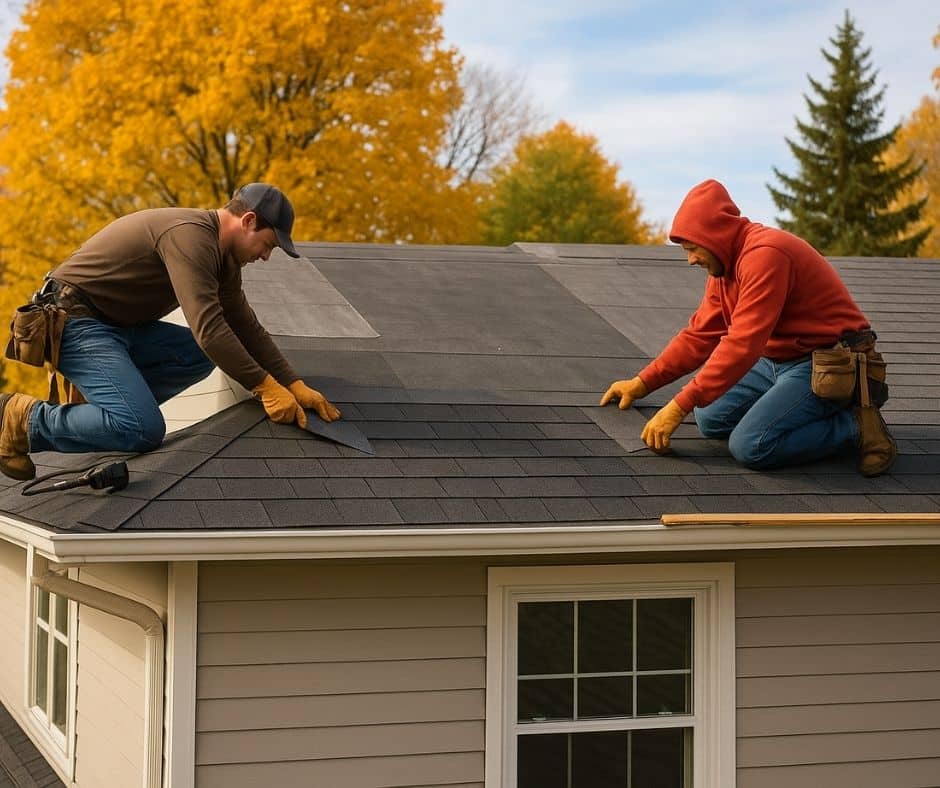When Is the Best Season to Install a New Roof in Cold Regions?
Thinking about a roof replacement? Timing matters. Especially in cold climates. Learn the best season, materials, and tips for a long-lasting roof.
Living in a cold region means timing a new roof installation is especially important. The best time to replace roof in cold climates is typically late spring through early fall, when temperatures are mild and weather conditions are more predictable. Scheduling roof work during this window helps ensure proper sealing and adhesion of materials, reducing the risk of weather-related delays.
Roofing projects in winter or during extreme cold should be avoided when possible, as low temperatures can affect the flexibility and performance of roofing materials. Homeowners who plan ahead for the best season can enjoy a smoother installation process and better long-term results.
Quick Roofing Insights for Cold Climates
- The best season is late spring to early fall for cold regions
- Proper planning ensures smooth installation and durability
- Choosing materials and contractors suited for cold climates matters
Determining the Best Time to Replace Roof in Cold Climates
Weather patterns and material requirements are critical considerations for roofing projects in cold climates. Temperature extremes, contractor schedules, and the condition of roofing materials such as asphalt shingles affect the success and cost of roof installation.
Key Factors That Influence Roofing Season
The effectiveness of a roof replacement in cold regions depends largely on outside temperatures. Most roofing materials, especially asphalt shingles, need moderate temperatures to seal properly and avoid brittleness. Roofing season is affected by weather unpredictability. Heavy rain in spring, heat in summer, and snow or ice in winter can cause delays or prevent work entirely. Contractors often adjust their schedules to minimize weather-related disruptions.
Material efficiency also plays a role. For example, adhesives used in roofing may not cure well when it’s too cold. So residential roof installers from GPR Roofing and many other companies often monitor long-term forecasts to select days with suitable conditions for installation.
Why Fall Is Often the Best Time to Replace Roof in Cold Climates
Fall is commonly considered the best time to replace roof in cold climates. During autumn, daytime temperatures stay within the ideal range for most roofing materials to bond and settle properly.
There is less risk of sudden temperature drops compared to late spring or early winter, which helps reduce install complications. Workers can complete roofing projects without exposure to extreme heat or bitter cold, improving safety and efficiency.
Some homeowners choose fall roof replacements to prepare for the upcoming winter. A properly installed roof prevents heat loss and moisture intrusion during cold months, contributing to lower energy costs and improved home comfort.

Comparing Summer, Spring, and Winter Installations
Spring offers moderate temperatures, but unpredictable rain can interrupt projects. Roofing professionals may face delays or need to reschedule, impacting the completion timeline for roof replacement. Summer is less ideal in some cold regions. High temperatures may not be as prolonged, but heatwaves can soften asphalt shingles, making them harder to handle.
Winter poses the greatest challenge. Freezing temperatures make shingles brittle and adhesives unreliable. Many residential roof installers from GPR Roofing are reluctant to schedule full roof installations during this time, except in emergencies, due to the risks associated with extreme cold and snow accumulation.
Selecting Roofing Materials and Contractors for Cold Climates
Selecting appropriate roofing materials and reputable contractors is essential for durability and energy efficiency in cold climates. Roofing projects in these regions require attention to material performance, proper contractor experience, and planning around challenging weather conditions. Factoring in the typical roof replacement cost for your area during the planning stage can help balance quality materials with budget expectations.

Impact of Temperature on Asphalt Shingles and Other Materials
Cold temperatures affect roofing materials in different ways. Asphalt shingles can become brittle and crack if installed in very cold weather, reducing their long-term lifespan. They require careful handling and might not seal properly if temperatures are too low.
Metal roofing performs well in cold climates, as it sheds snow easily and is not prone to cracking in freezing conditions. Slate and certain synthetic materials also provide durability and strong resistance to snow, ice, and wind. Insulation R-values and snow load ratings are critical factors to check for each product, as specified by regional building codes.
Choosing Qualified Roofing Contractors
Hiring a roofing contractor with experience in cold region installations is necessary for quality results. Contractors should be familiar with local climate patterns, building codes, and appropriate installation techniques for the selected material. It is recommended to verify licenses, insurance, and references. Requesting proof of previous work in similar conditions can provide confidence in their expertise. Reliable contractors will discuss material suitability and precautions to prevent issues such as ice dams, moisture intrusion, or ventilation failures.
Homeowners should request detailed written estimates and timelines. Contractors using proper cold-weather installation methods can help ensure warranties remain valid, especially when installing materials like asphalt shingles that require special handling.
Making the Right Roofing Decision
Each season presents unique advantages and challenges for roof installation in cold regions. Fall is often preferred because of its mild weather and low risk of extreme temperatures, making it the best time to replace roof in cold climates for many homeowners.
Winter generally poses problems like material brittleness and installation delays from snow and ice. However, emergency repairs can still be managed with proper preparation. Spring and summer may be suitable when weather patterns are stable. Contractor availability and regional climate should guide the final decision.
A well-timed project ensures the roof’s durability and performance against harsh weather. Homeowners benefit most when considering both the climate and contractor recommendations before proceeding.
